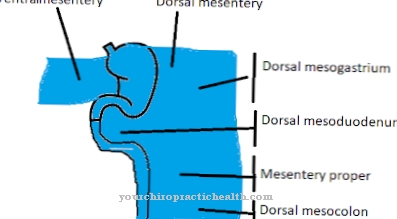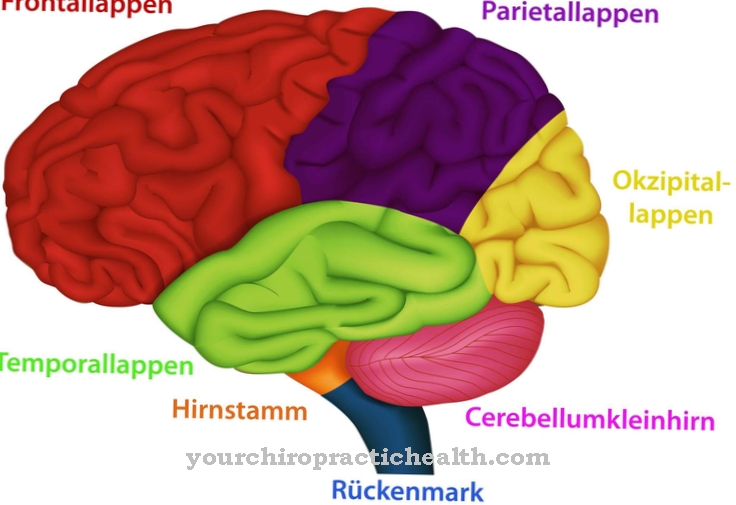The brain is one of the most complex and complicated structures in the whole human body and has been a constant source of new puzzles for generations of researchers. The Midbrain is only a small part of this complex system and yet a small miracle in and of itself.
What is the midbrain?
The Midbrain is part of the human brain, with all vertebrates having a midbrain. In the medical literature it is referred to by the ancient Greek term mesencephalon.
It is part of the brain stem and therefore also part of the oldest area of the brain in terms of development history. In addition to the brain stem, there are three other main areas in the human brain: the cerebrum, the cerebellum and the diencephalon.
Anatomy & structure
The midbrain is an area about 1.5 to 2 cm in size, which is located below the intermediate brain (diencephalon) and above the so-called bridge (pons). Under the bridge is the medulla oblongata, the elongated spinal cord, which merges directly into the spinal cord.
These three brain areas together form the brain stem. The midbrain itself is also divided into three layers: the cerebral legs, the midbrain dome and the midbrain roof.
The two cerebral legs form the front part of the midbrain. They protrude into the diencephalon and become through a kind of ditch, the Interpeduncular fossa, separated from each other. They also contain some nerve tracts that run between the brain and the spinal cord, as well as the third cranial nerve. The midbrain hood forms the largest part of the midbrain in terms of area. It contains some important nerve cells for the activity of muscles like the Nucleus ruber, of the Nucleus nervi trochlearis or the Nucleus nervi oculomotorii.The substantia nigra, the "black substance", is located at the transition from the midbrain dome to the cerebral legs. This owes its name to its surface, which is colored black by accumulations of melanin.
The roof of the midbrain is the back of the midbrain and is shaped like a thin plate with four elevations on it. This is why this area is also known as the “four hill plate”. There are two upper mounds (colliculi superiores) and two lower ones (colliculi inferiores).
The IV cranial nerve (Trochlear nerve) out. Another peculiarity of the midbrain is that Mesencephalic aqueduct, a kind of water pipe through which the cerebrospinal fluid called cerebrospinal fluid runs from the third to the fourth cerebral ventricle.Function & tasks
The midbrain fulfills several tasks within the very complex neural system. Among other things, it is responsible for controlling the majority of the eye muscles, e.g. for opening and closing the eyes or contraction of the pupils.
It is also an important switching center between different nerve pathways in the human body. On the one hand, it forwards information and stimuli from the spinal cord via the diencephalon to the cerebrum and, conversely, stimuli from the cerebrum to the nerve cells in the spinal cord responsible for motor functions.
This function makes the midbrain an important part of the so-called extrapyramidal motor system, which is responsible for all control processes of the human motor system.
But stimuli that are picked up by the ears and eyes also first reach the midbrain, from where they are passed on to the cerebral cortex and processed there. In addition to this important function for sensory and auditory perception, the midbrain as part of the limbic system also plays an elementary role in the perception of pain.
Complaints & illnesses
There are a number of diseases and conditions that can arise in connection with a malfunction of the midbrain. One of the best-known diseases in this context is Parkinson's disease. The disease, which is popularly referred to as "Parkinson's", is caused by a progressive decay of nerve cells in the "substantia nigra". The nerve cells located there use the messenger substance dopamine to transmit stimuli. The progressive lack of dopamine can disrupt motor movements, which can lead to muscle malfunctions such as tremors and a general slowdown in movement.
There are also changes in the substantia nigra in attention deficit hyperactivity disorder, or ADHD for short, and in attention deficit disorder (ADD). This leads to a partially incorrect transmission and processing of the stimuli between the different brain regions for which the midbrain is responsible.
In addition, the midbrain can also be affected by a benign or malignant tumor. This can permanently and seriously impair its functionality and lead to various symptoms such as disorders of motor skills, breathing, consciousness, concentration or walking.
Problems moving the eyes or a dysfunction of the pupil can also be signs of a tumor in the midbrain. There are also a number of rare diseases that can cause damage to the midbrain.These include, for example, Nothnagel syndrome, in which the four-hill region is affected.
This can result in problems with eye mobility as well as impaired perception and motor skills. In the so-called Benedict syndrome, however, both Nucleus ruber as well as the Substantia nigra damaged. The motor skills of the eyes and the entire musculoskeletal system are also sustainably influenced.The midbrain, like all parts of the human brain, is a very complex structure, the anatomy and functions of which have been researched quite well. But many diseases that can be traced back to defective processes in the midbrain are unfortunately still not entirely curable, even if their symptoms can be weakened and their progression slowed down.
You can find your medication here
➔ Medicines against memory disorders and forgetfulness



























